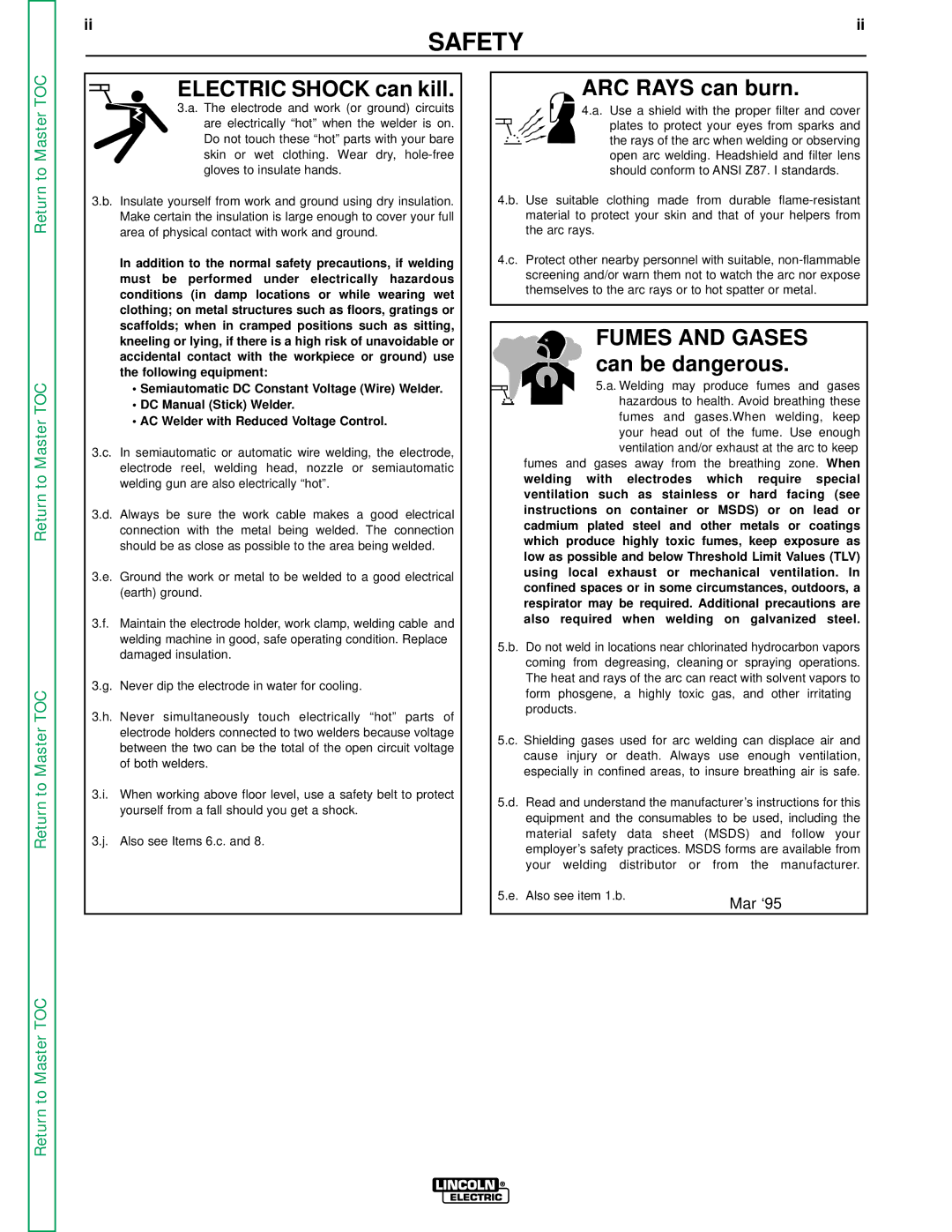SVM 110-A specifications
The Lincoln Electric SVM 110-A is a state-of-the-art welding machine designed to cater to the needs of professionals and hobbyists alike. Known for its adaptability and superior performance, the SVM 110-A provides a seamless welding experience that is gaining popularity across various industries.One of the main features of the Lincoln Electric SVM 110-A is its impressive power output. Capable of delivering up to 110 amps of welding current, this machine is ideal for a wide range of applications, including light to medium fabrication work, maintenance, and repair tasks. The versatile voltage input options allow users to operate the machine on standard household current as well as generator power, enhancing its portability and usability in diverse settings.
The SVM 110-A employs advanced inverter technology, which allows for a more compact design without sacrificing performance. This technology not only improves efficiency but also provides greater control over the welding arc, ensuring cleaner beads and reduced spatter. Additionally, the inverter design contributes to a lighter weight, making the SVM 110-A easy to transport and maneuver.
Another significant characteristic of the SVM 110-A is its user-friendly interface. With intuitive controls and clear display indicators, the machine is designed for ease of use, enabling welders to quickly adjust settings to suit their specific needs. This feature is especially beneficial for beginners who are looking to enhance their skills without being overwhelmed by complex operations.
The machine supports a variety of welding processes, including MIG and stick welding, offering unmatched versatility in terms of the types of materials it can handle. From steel to aluminum, the SVM 110-A demonstrates excellent compatibility with various consumables, allowing users to select the best options for their projects.
Furthermore, the design of the SVM 110-A incorporates advanced safety features, including thermal overload protection and a sturdy construction that can withstand demanding environments. This commitment to safety ensures that users can perform their work confidently and efficiently.
In conclusion, the Lincoln Electric SVM 110-A is a remarkable welding machine that combines power, portability, and ease of use. Its advanced inverter technology, user-friendly controls, and versatility make it an ideal choice for both amateurs and seasoned welders. Whether for home projects or professional trades, the SVM 110-A stands out as a reliable and efficient solution in today’s welding landscape.

